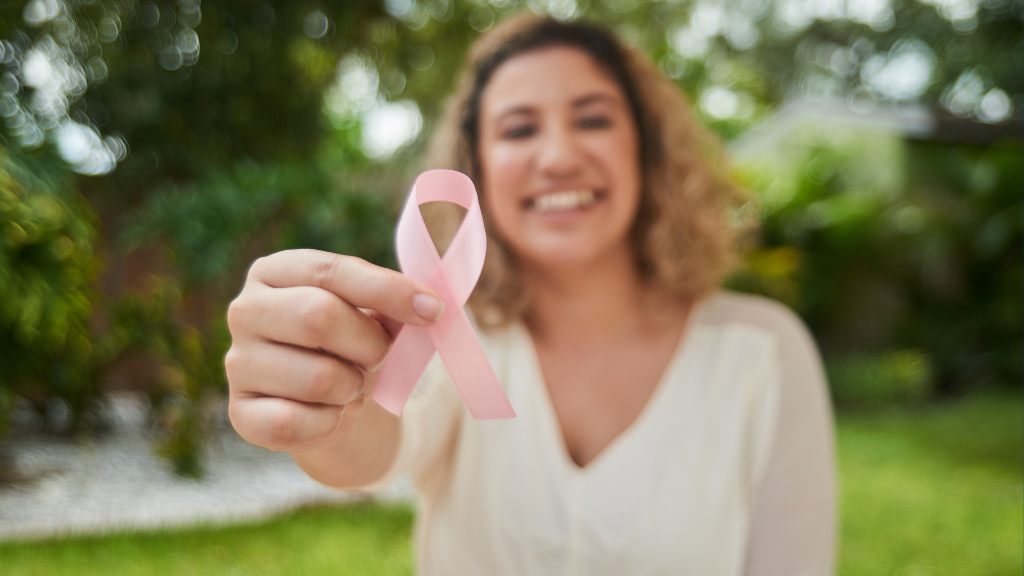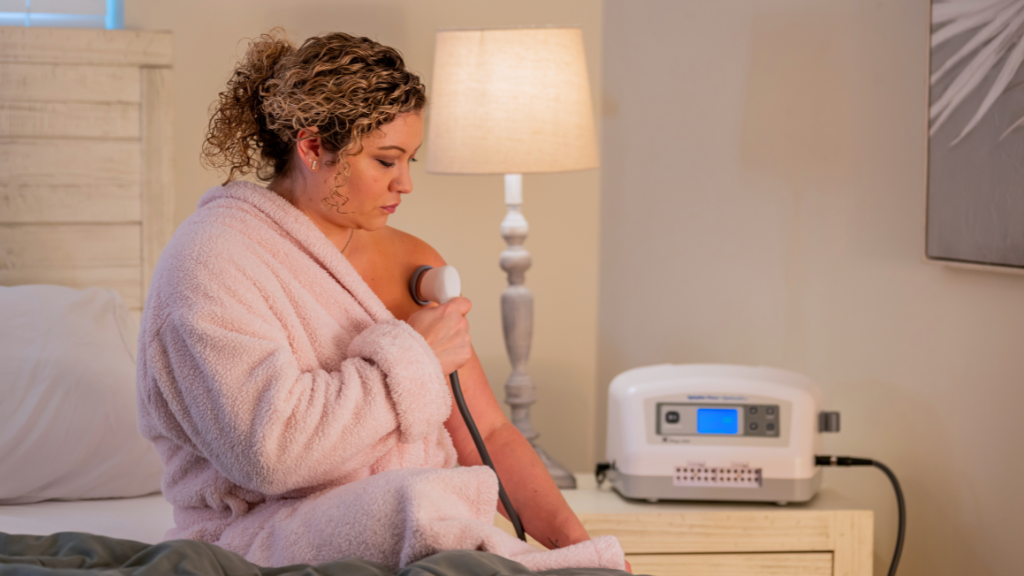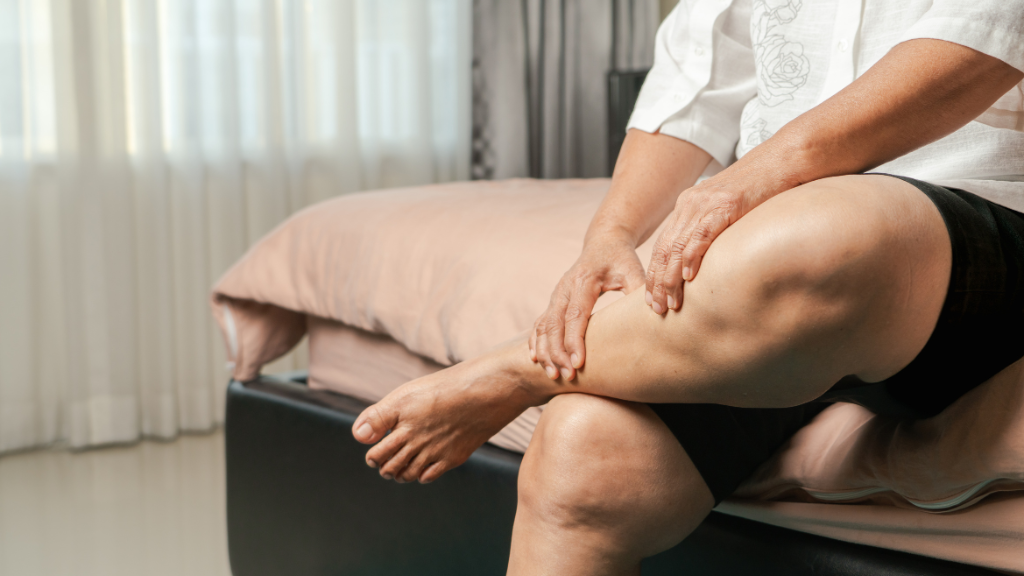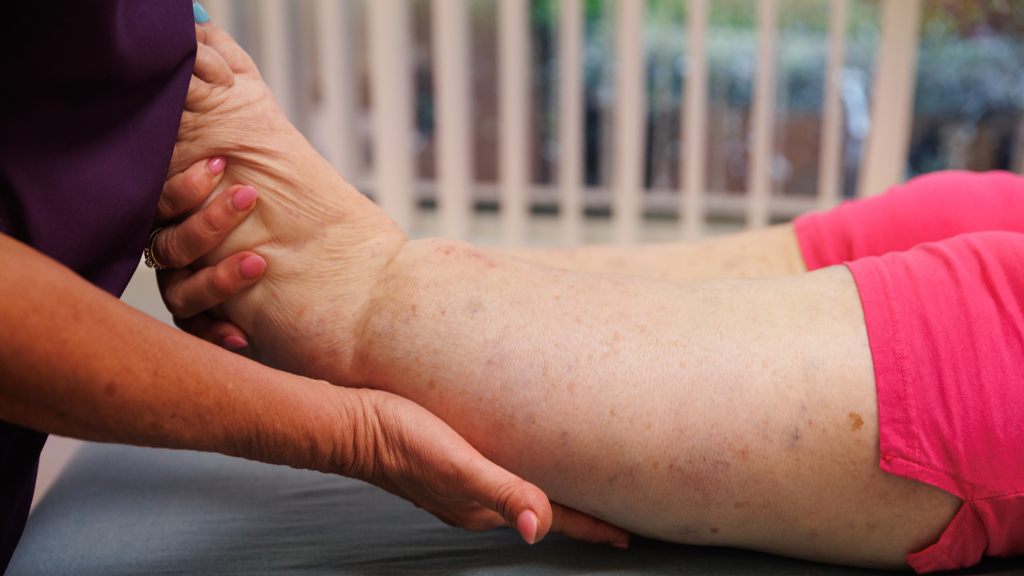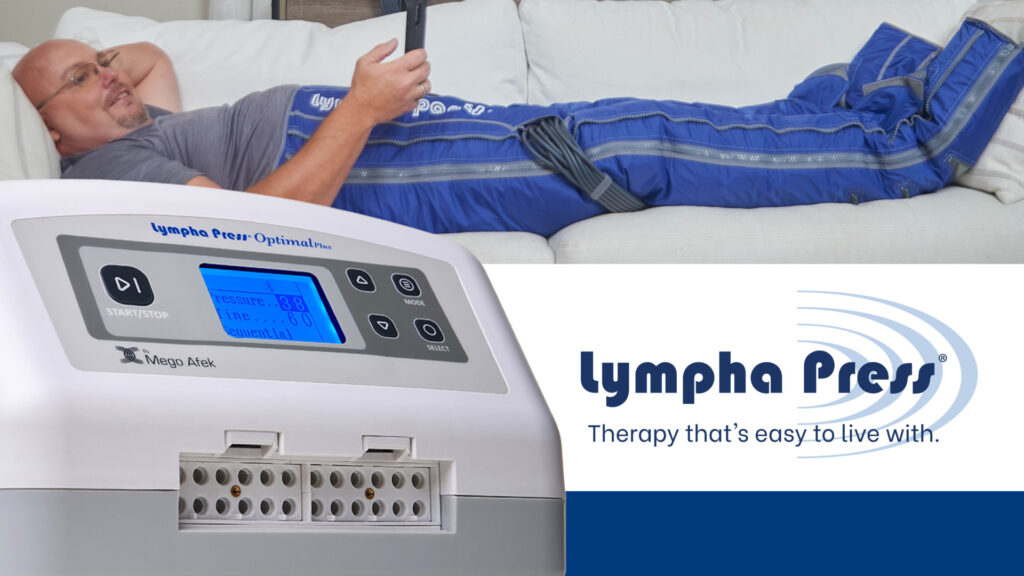
After breast cancer treatment, many people develop lymphedema at some point in their lives. Lesli R. Bell, PT, DPT, CLT-LANA, specializes in upper body and upper extremity lymphedema therapy. She discusses why breast cancer-related lymphedema happens, symptoms to watch for, and how to manage the condition.
Why Lymphedema Happens After Breast Cancer
Lymphedema affects the upper body after breast cancer treatment because of disruption to the lymphatic vessels in the upper extremity and chest wall. Affected lymphatic vessels in that area of the body can create a reduction in pathways for lymphatic fluid to exit. The resulting bottleneck may cause swelling in the hand, arm, chest wall, back, or breast.
“This disruption may happen when your medical team is determining your stage of cancer by removing lymph nodes to see if cancer cells are present,” says Bell. “Or it can happen during treatment for breast cancer.”
The following breast cancer treatments can disrupt lymph nodes and vessels:
- Radiation therapy stops the growth of cancer cells. But radiation may also scar tissues around lymph nodes and vessels, affecting their ability to clear lymph fluid.
- Surgery removes cancerous tissues to decrease the chances of recurrence. Surgeons remove lymph nodes to stage or diagnose the extent of cancer and determine treatment. In extreme cases, treatment may include the removal of several or all lymph nodes in areas of the chest and armpit. Removal of all lymph nodes creates a higher risk for lymphedema.
Disrupted Lymph Flow Causes Fluid Backup
“When disruption happens to your lymph system, it’s a little like removing some train tracks from a railway,” says Bell. “You now have the same number of trains trying to get through on fewer tracks, resulting in a traffic jam. In the case of the lymph system, the result is a backup of fluids into your tissues.”
Disturbance to the lymph nodes in the chest and armpit typically results in fluid backup in the arm or hand. But the backup can also occur in the breast or chest wall. This congestion can result in chronic swelling that leads to a concentration of proteins in the fluid, making it thicker. The body has a harder time clearing thicker fluid.
Who Breast Cancer-Related Lymphedema Affects
Overall, approximately 1 in 5 women who receive breast cancer treatment develop lymphedema, affecting approximately 1 million women in the U.S. Your individual risk depends on the extent of treatment you receive and how it affects your lymphatic system. Women who have radiation treatment, surgical removal of multiple lymph nodes, or both, have a higher risk of lymphedema.
Lymphedema can easily progress without treatment. The condition can significantly impact the arm’s range of motion, use of the arm or hand, mental health, and overall quality of life.
When You May Develop Breast Cancer-Related Lymphedema
“Unfortunately, you have a lifetime risk of lymphedema after breast cancer treatment,” says Bell. “The risk is present as soon as treatment is complete and lasts for a lifetime.”
You may have swelling in the chest wall or breast for many months after breast cancer surgery. The swelling may be part of healing and not be a sign of lymphedema. However, lymphedema may also develop during recovery, so watching for symptoms is essential.
Symptoms of Breast Cancer-Related Lymphedema
“Early on, you may have intermittent swelling in your hand or arm or elbow, really anywhere in your arm,” says Bell. “You may also have swelling in your chest or breast.”
It’s best to treat lymphedema in the earliest state, so it’s important not to ignore symptoms that may seem minimal. Treating persistent swelling after breast cancer treatment may reduce post-operative fluid congestion, potentially decreasing pain. Treatment may also improve scarring and reduce the severity of lymphedema.
Keep in mind that swelling and symptoms may come and go due to specific activities, the time of day, or even weather changes. Symptoms that may be intermittent or consistent include:
- Aching in the arm, armpit, breast, and chest wall (severe pain is uncommon and requires evaluation)
- Clothing and jewelry that feels tight on your shoulder, arm, wrist, or hand
- Cording, a condition where you develop a tight string of tissue that might limit mobility of the shoulder or elbow
- Difficulty bending your fingers
- Feelings of fullness or heaviness in parts of your arm or armpit
- Swelling in your chest, armpit, arm, or hand
Watch for Changes
“The best way to identify breast cancer-related lymphedema early is to participate in an early surveillance program including periodic follow-up for measurements and symptom assessment. These programs also provide education on symptoms to watch for,” says Bell. “Ideally, your cancer treatment center will do pre-treatment measurements of the arm so there is a baseline for comparing any post-treatment changes.”
The earlier you begin treating lymphedema, the better your chances are of keeping it from progressing. You may only need minimal treatment, such as wearing a compression sleeve to control swelling when you’re active. A lymphedema therapist can help you decide on the best treatment options.
Treatment for Breast Cancer-Related Lymphedema
If lymphedema progresses, there are several options for treatment. “We generally begin with complete decongestive therapy, or CDT,” says Bell. CDT includes:
- Education about the condition
- Exercises to help move fluid
- Skincare and infection precautions
- Manual lymphatic drainage (MLD), a type of massage that moves the fluid out of swollen areas
- Bandaging, which uses specialized short-stretch bandages to compress the areas of swelling and reduce fluid buildup
- Compression garments, which are snug-fitting sleeves, gloves, or bras that support the arm, hand, chest, or back to keep swelling down
Bell also frequently uses a lymphatic pump or pneumatic compression device in her practice. “I often use a pump before starting MLD to help with fluid reduction of the arm, and then I perform MLD and bandaging. I’ve found this helps the bandages maintain the compression and not loosen as quickly,” she says. “Using a pump early on helps reduce congestion in the arm so the therapist can move forward with treatment. I’m a big believer in utilizing pumps in conjunction with CDT when appropriate.”
Compression Pumping at Home for Breast Cancer-Related Lymphedema
Using a lymphatic compression pump at home may be an important part of lymphedema treatment. Lympha Press offers three innovative compression garments designed to reduce breast cancer-related lymphedema swelling:
- The Arm Sleeve treats the arm from shoulder to hand
- The ComfyLite™ and ComfySleeve™ treat one arm and one side of the torso along with targeted therapy to the axilla (armpit)
- The Lympha Jacket™ treats both arms together with the entire upper body
A pump can significantly reduce the risk of cellulitis (infection) in swollen tissues, which can then lower the risk of fibrosis (a condition where tissues become hardened due to prolonged infection or inflammation).
Upper Extremity Lymphedema Management is Possible
Treating lymphedema in the earliest stages makes ongoing management easier, but don’t give up hope if you’re in a later stage. “This condition can be managed,” assures Bell. “There are a wide variety of options to manage lymphedema after breast cancer. If you have a therapist who can utilize all the tools that are out there, including pneumatic compression, you can manage lymphedema well.”
Whether you’re a patient, a medical professional, or someone seeking to understand a loved one’s condition, we invite you to join our monthly Lymphedema Patient Roundtable. Hear powerful stories, gain valuable insights, and discover that you’re not alone. The Roundtable is a supportive place for hope, help, and a community that truly cares.
